

Designing and installing a walk-in shower is an innovative way to modernize bathrooms, especially for those seeking convenience, accessibility, and a touch of luxury. This process involves a variety of considerations, from choosing the right materials and layouts to selecting methods that align with your home’s unique structural aspects. Both design and installation play huge roles in shaping the final look, function, and value of a walk-in shower, particularly within residential spaces across the United States.
Exploring design and installation options for walk-in showers means navigating multiple choices: from barrier-free entries and glass enclosures to customized fixtures and advanced waterproofing systems. Homeowners and contractors alike are prioritizing features that combine comfort, style, and low maintenance. As American households increasingly seek bathroom remodels that add usability and future-proof properties, the diversity in these solutions has expanded considerably.
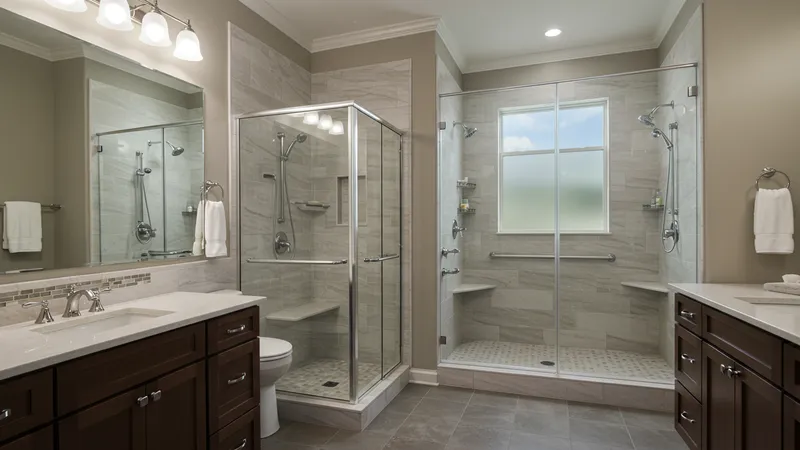
The demand for walk-in showers is rising sharply in the United States, with interior designers and homeowners shifting focus toward barrier-free designs that enhance accessibility. For example, the Kohler LuxStone Walk-In Shower and American Standard Passage Walk-In Shower Kit offer customizable wall panels and modular systems, making them popular in both urban and suburban homes.
Comparing installation methods reveals significant differences in complexity and cost. While prefabricated kits like the DreamLine Enigma-X minimize installation time and disruption, fully custom builds using slip-resistant tiles and professional waterproofing achieve a more tailored result, generally at a higher investment.
Waterproofing options are vital for ensuring the durability and hygiene of walk-in showers. Products such as the Laticrete HYDRO BAN and Schluter Kerdi Shower Tray System are trusted in the industry for their reliability and coverage. Safety underfoot is also a major concern, leading to widespread adoption of FloorScore Certified Slip-Resistant Tile for both public and residential settings.
Ultimately, the right walk-in shower solution must balance design preferences, installation requirements, budget, and user needs. Americans are increasingly attracted to integrated features such as steam shower packages and adaptive handheld fixtures, with trends showing a significant shift toward wellness-oriented spaces.
As you explore the spectrum of design and installation options for walk-in showers, the deeper details reveal even more valuable insights ahead—especially when it comes to customization, longevity, and the latest innovations that continue to shape modern American bathrooms.
Material selection for walk-in showers is one of the most influential choices a homeowner can make, directly impacting style, maintenance, and safety. In the United States, glass enclosures like the DreamLine Enigma-X Frameless Glass Shower Enclosure remain highly desirable for their sleek appearance and the illusion of greater space. Alternatively, solid surface wall systems such as Kohler’s LuxStone are favored for their durability and easy cleaning, bridging the gap between luxury and long-term practicality.
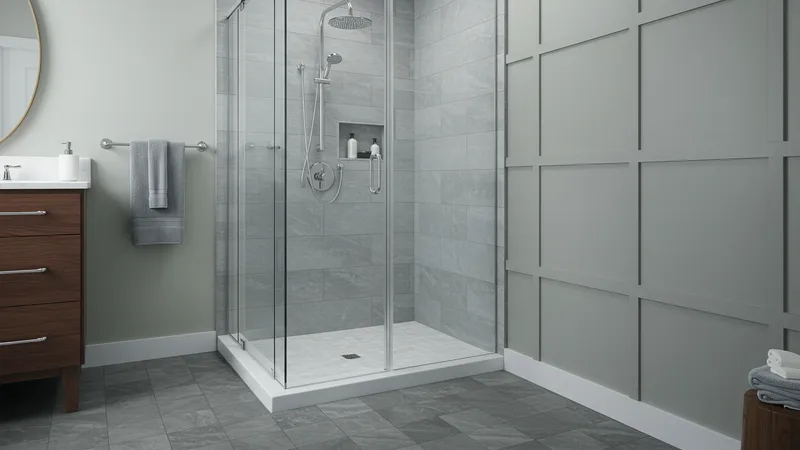
Flooring is another critical aspect of walk-in shower design. Products such as FloorScore Certified Slip-Resistant Tile have become essential, especially for families or aging-in-place renovations. These tiles provide peace of mind by reducing slip risk while offering a range of aesthetic options to match traditional or contemporary tastes. They are particularly popular in states like Florida and California where low maintenance and high safety standards are top priorities.
For those seeking a spa-like experience, the MrSteam iDream Steam Shower Package brings the wellness trend firmly into home bathrooms. Although installation is more complex and costly than standard showers, the inclusion of steam can increase property value in premium markets. Such packages are most often installed in new constructions or major remodels, reflecting a growing American emphasis on home wellness spaces.
Beyond materials, style is guided by the choice of fixtures and configuration. The Moen Inovato Handheld Shower Set offers both functionality and versatility, making it a popular upgrade in North American homes. Its flexible design aids accessibility and accommodates a diverse range of users, from children to those with mobility considerations. These integrated options show the evolving expectations for bathroom fixtures in the U.S.
The installation process for walk-in showers in the United States has become more streamlined thanks to prefabricated kits like the American Standard Passage Walk-In Shower Kit and full-service solutions from Bath Fitter. These products are gaining traction among homeowners who want to minimize disruption and labor costs while still achieving a professional result. Kits often come with simplified instructions and compatibility with standard U.S. plumbing, reducing installation time significantly.
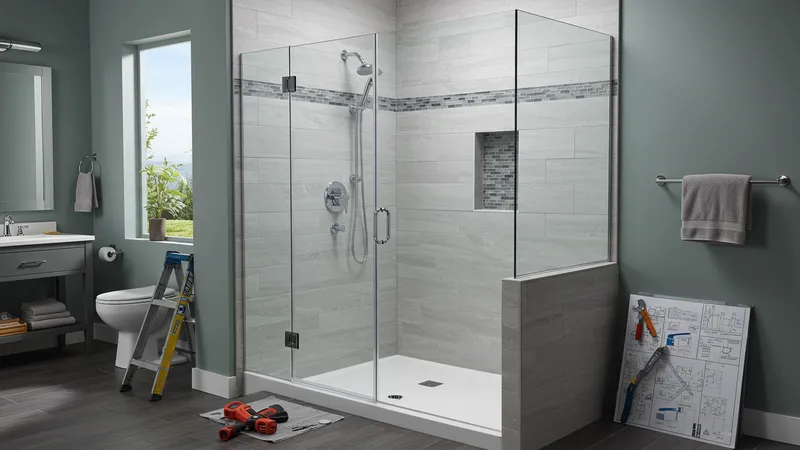
For those seeking a tailored result, custom builds are facilitated by products such as the Schluter Kerdi Shower Tray System and Laticrete HYDRO BAN Waterproofing System. Professional installation is typically required, which may increase labor costs but ensures the shower meets local building codes and waterproofing standards—an important factor in states with high humidity, like Louisiana and Texas.
Labor rates in the U.S. vary considerably depending on region and project complexity. In metropolitan areas, the average cost for labor on a custom walk-in shower install can range from $2,000 to $7,000, on top of material prices. The choice between prefab kits and fully custom installations often comes down to individual project requirements, timeline expectations, and local contractor expertise.
Advanced installation systems, while sometimes carrying higher upfront costs, often lead to lower ongoing maintenance and repair needs. For instance, systems with integrated waterproofing and pre-sloped trays offer greater durability against leaks and mold—persistent concerns among American homeowners and regulators. By investing in proven brands and skilled labor, the result typically meets or exceeds expectations for function and longevity.
Safety is a primary focus for many Americans updating their bathrooms with walk-in showers. Barrier-free entries provided by solutions like the Delta Faucet MultiChoice Universal Shower System and DreamLine Enigma-X allow for easy access, making them especially beneficial for multi-generational households and those with mobility limitations. Compliance with Americans with Disabilities Act (ADA) guidelines is increasingly sought as aging-in-place remodels become more common across the country.
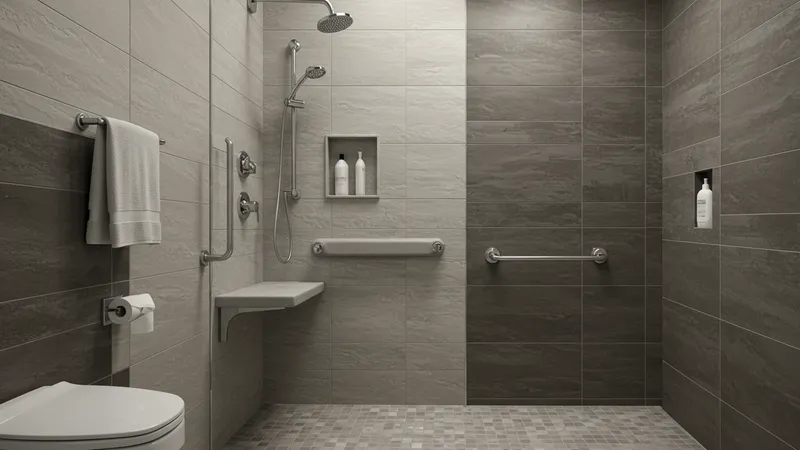
Slip-resistant tiles, such as FloorScore Certified products, are recommended by many U.S. building codes for bathrooms used by seniors or individuals with disabilities. These surfaces reduce accident rates and are available in a wide array of colors and textures to match individual aesthetics, clearly reflecting the American emphasis on safety without sacrificing design.
U.S. regulations demand strict waterproofing and drainage compliance for all walk-in shower installations. Systems like Laticrete HYDRO BAN and Schluter Kerdi have earned trust among American installers for their proven track record with local inspectors. Ensuring the correct slope and drain placement is a commonly cited challenge but is solvable using these specialized solutions.
Accessible design is not just about entry width or curbless bases—it also includes adaptability, as seen in products like the Moen Inovato Handheld Shower Set. Features that can be easily repositioned or adjusted cater to a broader range of users, aligning with best practices recommended by U.S. accessibility consultants and the National Kitchen & Bath Association (NKBA).
Customization is at the heart of current walk-in shower trends in the United States. Modular solutions such as the Kohler LuxStone system and American Standard’s Passage kit allow homeowners to tailor layouts, finishes, and accessories to their specific tastes and spatial requirements. This flexibility has contributed to a surge in personalized bathroom projects, especially in upscale and mid-market renovations across American suburbs.
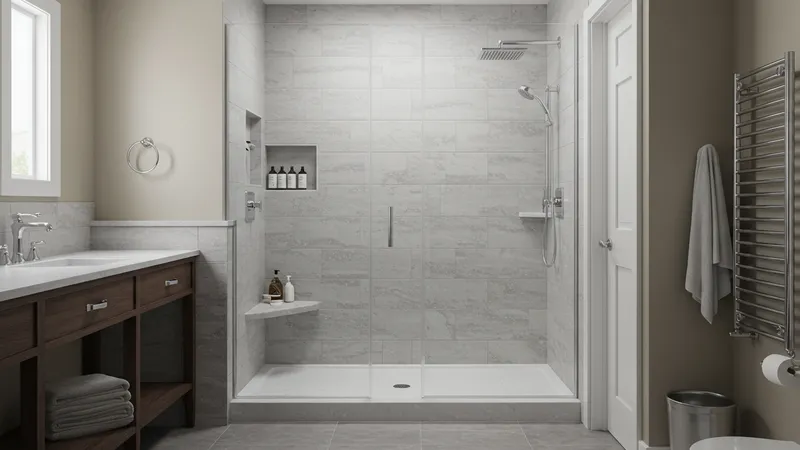
Maintenance is a major consideration, with a growing preference for surfaces that reduce cleaning time and resist staining. Solid-surface wall panels and seamless glass enclosures are top choices, with DreamLine’s Enigma-X and Kohler’s products consistently rated for ease of upkeep. Many Americans are opting for features like treated glass or antimicrobial coatings, reflecting a strong desire for hygienic, low-maintenance living spaces.
Emerging trends indicate the rise of wellness-oriented features, such as steam shower integration through MrSteam systems and adaptive fixtures for therapeutic use. These upgrades appeal not only for comfort but also as long-term lifestyle investments. Steam and spa-inspired enhancements are increasingly found in remodels intending to uplift resale value within competitive U.S. real estate markets.
Looking ahead, advancements in water-saving fixtures and digital controls are expected to continue influencing walk-in shower design and installation. Brands are responding with eco-friendly shower heads and app-integrated systems, aligning with shifting American priorities toward both luxury and sustainability. Homeowners who stay informed about these trends and innovations are best positioned to create bathrooms that will serve their needs well into the future.